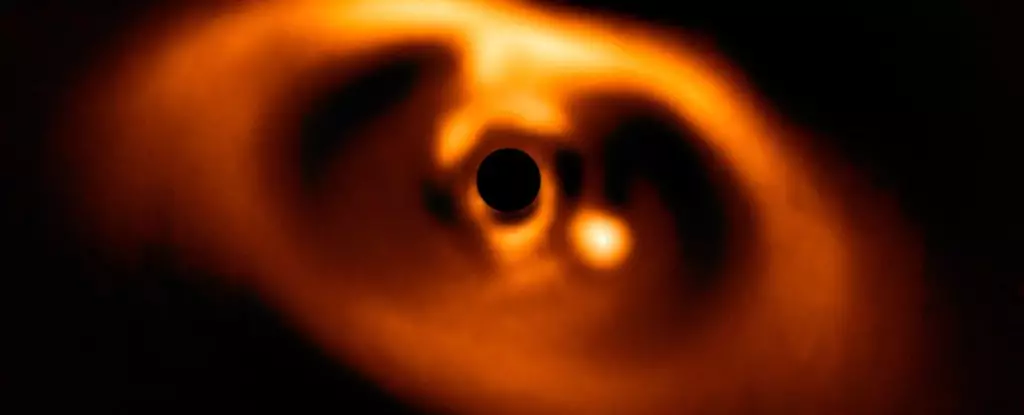In an age characterized by rapid technological advancement and revolutionary discoveries, modern astronomy stands as a beacon of hope for understanding the universe. The phrase “the age of shifting paradigms” encapsulates the profound transformation underway within this field. With the advent of next-generation telescopes and innovative machine learning techniques, astronomers are peeling back the layers of cosmic mystery, leading to groundbreaking revelations about celestial phenomena—particularly regarding the formation of planetary systems.
The traditional narrative surrounding the formation of star systems has long been governed by the Nebular Hypothesis, which suggests that stars and their orbiting bodies emerge from vast cloud formations of gas and dust, known as nebulae. This model supports a straightforward notion: as stars coalesce from these primordial materials, the leftover substances form protoplanetary disks that eventually give rise to planets. Yet, recent findings challenge this simplistic view, suggesting that the dynamics within these disks and the resulting planetary bodies may be far more intricate than previously imagined.
A pioneering study involving a team of renowned astronomers, inclusive of Postdoctoral Associate Chih-Chun “Dino” Hsu from the Center for Interdisciplinary Exploration and Research in Astrophysics (CIERA) at Northwestern University, has illuminated new understandings in this area. Their research, published in The Astrophysical Journal Letters, centers around PDS 70b, a still-developing exoplanet orbiting a young star approximately 366 light-years from Earth. This particular system is exceptional, as it hosts protoplanets within the confines of the circumstellar disk from which they originated—an ideal scenario for scrutinizing the birth and evolution of planets.
The research team utilized the Keck Planet Imager and Characterizer (KPIC) at the W.M. Keck Observatory to analyze the spectra emitted by PDS 70b. Notably, this exoplanet is distinctly young, at only around five million years old, presenting unique prospects for investigating the nascent stages of planetary development. Under the mentorship of Northwestern’s Jason Wang, an assistant professor of physics and astronomy, the research team made strides in comparing the planet’s atmospheric composition with the materials from its surrounding disk.
Traditionally, astronomers faced considerable challenges in directly observing protoplanetary disks to understand planetary births due to the temporal constraints of sighting exoplanets after they have formed. As a result, crucial data on formative stages went largely underappreciated. However, the innovative photonic technologies co-developed by Wang have enabled scientists to isolate and analyze the light emitted from faint objects like PDS 70b against the backdrop of brighter stellar sources. This breakthrough provided unprecedented access to detailed spectral features, unveiling the atmospheric constituents of PDS 70b.
The analysis revealed the presence of essential compounds, namely carbon monoxide and water, which led researchers to calculate the carbon-to-oxygen ratio within the atmosphere of the exoplanet. Contrary to their initial expectations, they discovered a striking discrepancy; rather than mirroring the gas compositions present in the protoplanetary disk, the carbon levels relative to oxygen were notably lower in PDS 70b. This revelation raised critical questions concerning the long-held assumptions about planetary formation processes.
To interpret these unexpected findings, the research team proposed two interrelated hypotheses. The first posits that PDS 70b may have formed prior to the disk becoming enriched in carbon. Alternatively, the planet might have acquired the bulk of its mass from solid materials rather than gaseous accretion, suggesting a more complex accumulation strategy. As Hsu noted, traditional perspectives on the relationship between gas compositions in disks and planetary atmospheres may overly simplify the intricate processes involved in planet formation.
Furthermore, the notion that solid components—including trapped ice and dust—could significantly influence the carbon-to-oxygen ratio prompts the scientific community to reevaluate methodologies employed in studying exoplanet atmospheres. As Wang expressed, “It might be telling us that we can’t just compare gas versus gas.” This insight encourages a more nuanced approach in interpreting data, one that accounts for ‘dirty’ components that play crucial roles in shaping planetary atmospheres.
What lies ahead for this remarkable research is the comparative analysis of PDS 70b and its sibling, PDS 70c, another exoplanet forming alongside its counterpart. By gathering spectra from both planets, Hsu and his team anticipate gaining a richer understanding of the planetary system’s formative journey. Rather than isolating this study to a singular planetary body, their work emphasizes the necessity of examining complete systems, thereby painting a more holistic picture of planetary dynamics and evolution.
The findings from studying PDS 70b are not merely a singular anomaly; they exemplify the continuously evolving narrative of astronomy and exoplanet research. Each discovery nudges scientists to rethink previously accepted paradigms and to forge ahead in their quest for cosmic understanding. As astronomers continue to peer deeper into the universe, the unraveling mysteries will no doubt continue to shape our understanding of planet formation, challenging us to rethink what we believe about our place in the cosmos.


Leave a Reply